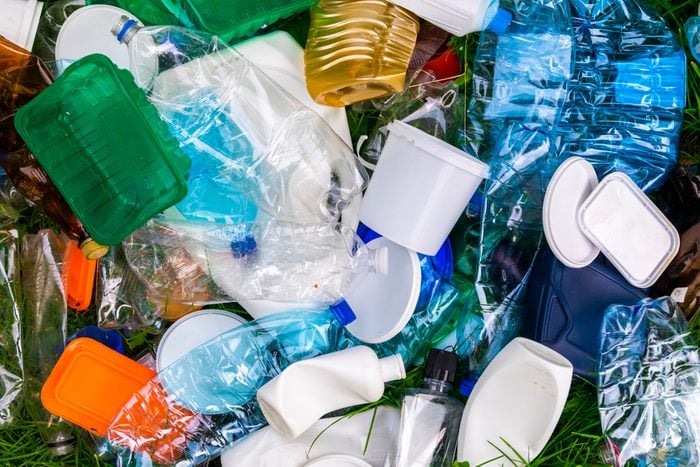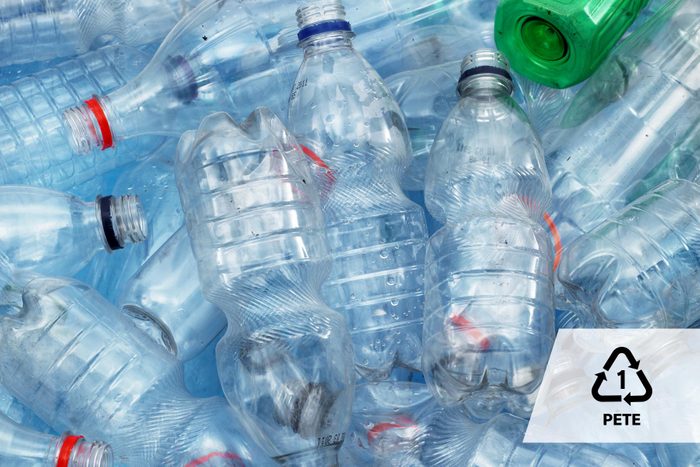
Polyethylene Terephthalate (PET or PETE, #1)
PET is one of the most commonly used plastics. It’s usually transparent and found in food packaging, including water and drink bottles, jars and polyester fabrics.
For the most part, PET is more frequently recycled, with exceptions. “Highly colorful or opaque PET bottles are far less recyclable, because even the color of the plastic can impact its recyclability,” says Brandon.
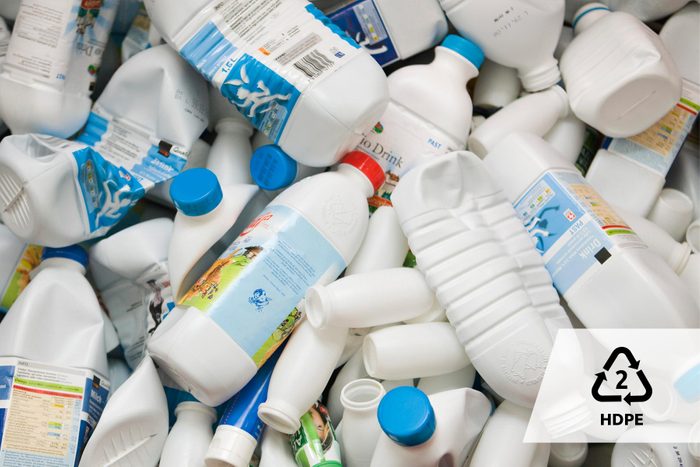
High-Density Polyethylene (HDPE, #2)
HDPE is one of the most versatile plastics. It comes in many forms, like milk jugs, shampoo bottles, single-use grocery bags, cutting boards, cereal box liners, park benches, buckets, children’s toys, furniture and rigid pipe for home water, sewer and irrigation lines.
Along with PET (#1), high-density polyethylene is one of the more often recycled plastics. It’s sometimes added to composite wood.
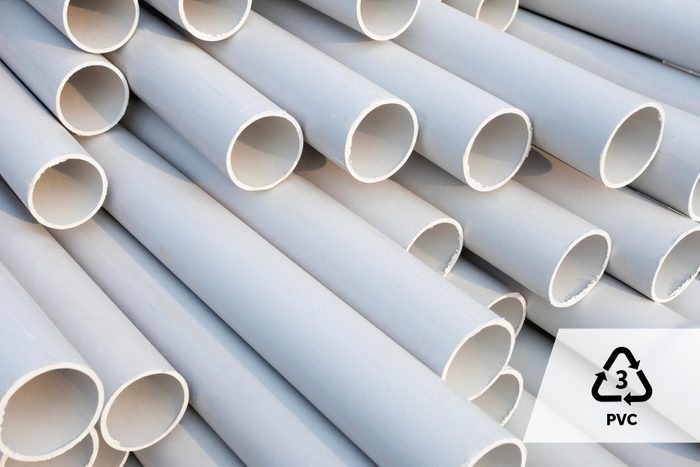
Polyvinyl Chloride (PVC or Vinyl, #3)
PVC resists weathering and easily disinfected. That makes it a prized material for water pipes and flooring, as well as medical supplies like tubing, oxygen masks and IV bags. It’s also used to insulate wires and cables, and to make credit cards, children’s and pet toys, yoga mats and teething rings.
Unfortunately, PVC is also particularly toxic. It’s classified as a carcinogen by the U.S. Department of Health and Human Services. That’s largely because it contains chemical additives including phthalates, like lead and cadmium, which leach out and evaporate into the air throughout its lifecycle.
While PVC is recyclable, it cannot go into curbside bins because its high toxicity requires special recycling systems. As such, many recycling centers do not accept it. Overall, less than 1% of PVC actually gets recycled.
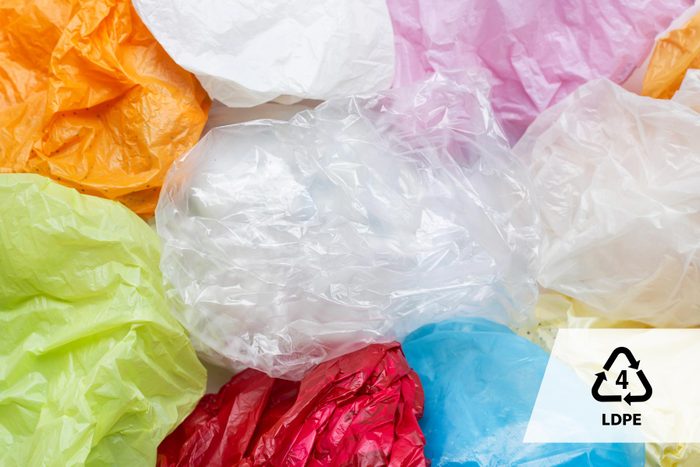
Low-Density Polyethylene (LDPE, #4)
LDPE is the softer, more flexible cousin of HDPE (#2). It’s most commonly found in single-use bags for sandwiches, newspapers, bread and dry-cleaning, as well food packaging, cling and shipping shrink wraps.
Some companies claim LDPEs are recyclable. But they’re much less likely to be recycled because municipalities won’t take them — they clog the sorting machines at recycling facilities. Many grocery and home improvement stores offer dropoff bins for bags and other LDPE plastics.
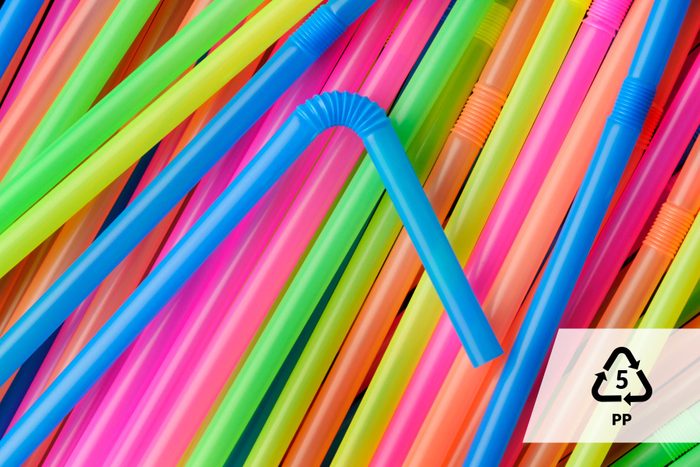
Polypropylene (PP, #5)
A durable and lightweight plastic, polypropylene is touted for its heat resistance. That’s why it’s often used for hot beverage cups, and for auto parts like bumpers and battery casings.
It’s also found in yogurt containers, bottle caps, straws, prescription bottles, packaging tape and disposable diapers. In its fiber form, it’s used in rope, clothing, camping equipment, upholstery fabrics and carpets.
It’s estimated that fewer than 3% of PPs get recycled because, like LDPEs, many facilities don’t accept them. That’s partly because they consist of several polymer types that don’t all melt at the same temperatures. But some facilities will take them, so check with your local recycling center.
If they don’t take them, some mail-in services like Terracycle that accept various forms of PP. Or see if any friends in a nearby town have curbside PP recycling, and take yours to them. You can also send your prescription medication bottles to Matthew 25: Ministries.
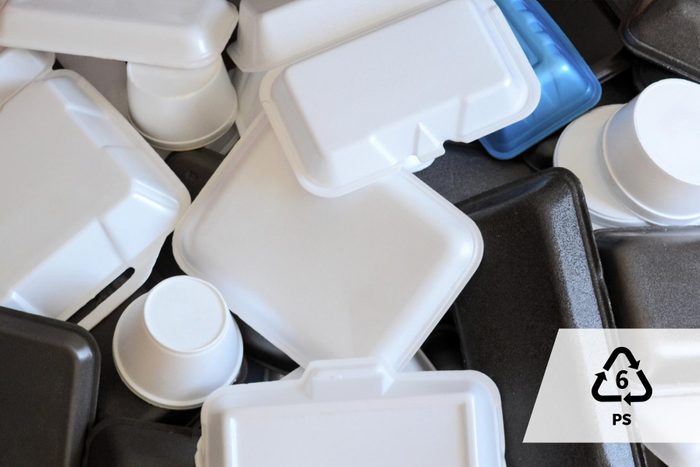
Polystyrene (PS or Styrofoam, #6)
From the tray your meat comes on, to egg cartons, take-out food containers, shipping peanuts and home insulation, polystyrene is a form of plastic that’s inexpensive and insulating. But like PVC (#3), it’s now known to be particularly dangerous to our health. As of 2023, it has been banned in Colorado, New York, Virginia and six other states.
The main danger comes from the chemical styrene, a neurotoxin linked to a range of health problems including cancer and nervous system issues. Exposure comes from touching it, ingesting foods heated in it and breathing fumes from burning.
Recycling facilities generally do not accept polystyrene, so it’s almost never recycled.
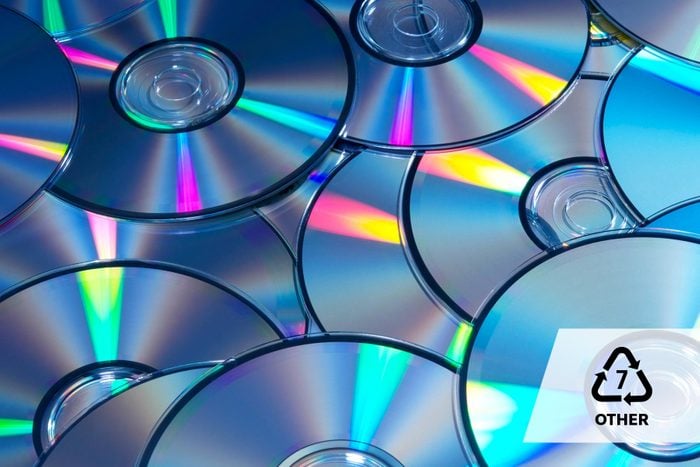
Other (#7)
This vague category encompasses all other plastics, including ones in clothing (nylon, acrylic, polyester and spandex), eyeglasses, sports and baby bottles, electronic components and DVDs, among others.
Recycling facilities generally do not accept #7 plastics, so these items are almost never recycled.
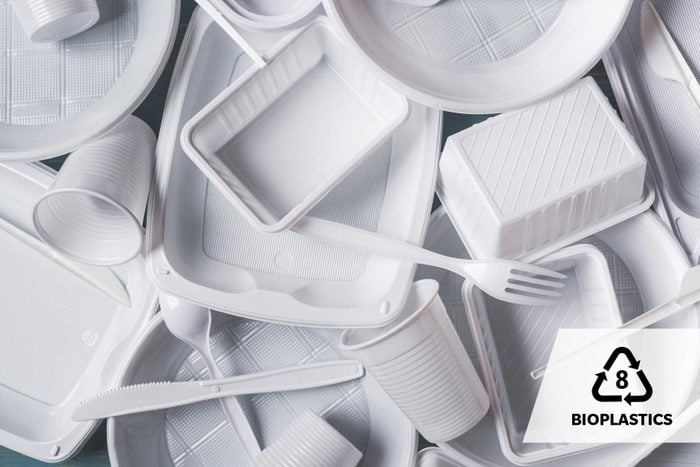
Bioplastics
Bioplastics are made partly or fully from plants like sugar cane, corn and potato starch. They don’t have a recycling number, but the packaging is often labeled as “compostable” or “biodegradable.”
“Due to their name, they are often thought of as similar to conventional plastics but better for people and the planet,” says Cirino. “But bioplastics are not as green as they are marketed to seem.”
Some contain as little as 25% plant-based ingredients and as much as 75% fossil fuel ingredients. Also, the crops grown to make them stress the climate, displacing people and nature and adding to fertilizer and pesticide pollution. Most also contain toxic chemicals.

